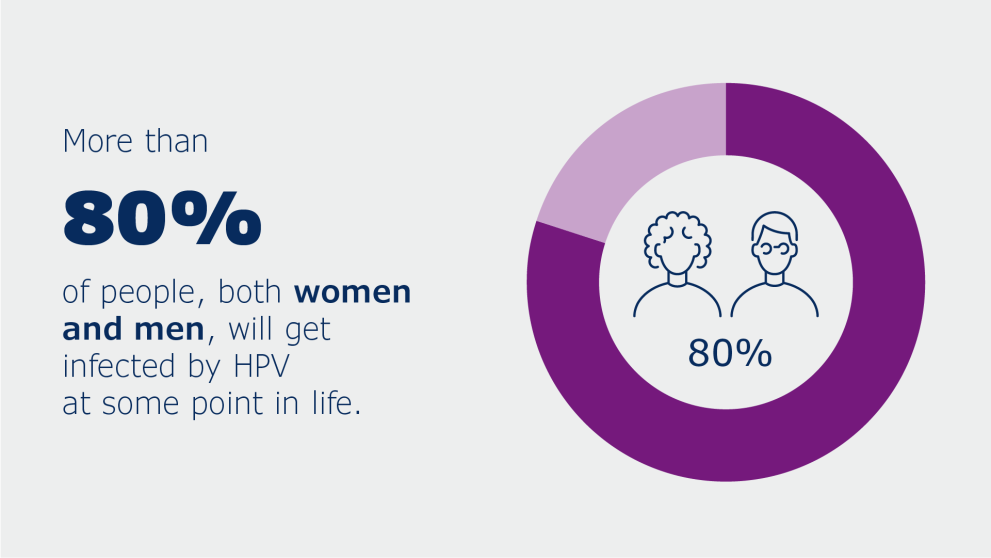Human papillomavirus (HPV) can be caused by 200 different strains, according to the World Health Organization (WHO).
In most cases, HPV is transmitted through sexual contact, but people can also get infected without having intercourse.
For most people, HPV infection disappears on its own. However, sometimes it can persist and cause complications. These include cancer.
The most common type of cancer that HPV causes is cervical cancer. Other less common cancers include anal, vulvar, vaginal, mouth / throat and penile cancers.
Prevalence of HPV
HPV infections are very common. More than 80% of people, both women and men, will get HPV at some point in life.

More than 80% of people, both women and men, will get infected by HPV at some point in life.
Vaccination
In the European Union (EU), HPV vaccination protects against the development of certain cancers that HPV causes.
HPV vaccination works best in children, both girls and boys, before they become sexually active.
The European Commission's 'Beating cancer' plan has set an HPV vaccination target for EU Member States to reach by 2030.
In 2025, many Member States were falling below the expected vaccination rates.
For more information on HPV and other vaccine-preventable diseases, see:
There is no treatment to cure HPV infections.
Vaccination of children is critical in preventing infection.
HPV vaccines protect against the types of HPV that cause most cervical, vaginal, vulvar, penile, anal and oropharyngeal cancers.
Vaccines also protect against the HPV types that cause most genital warts.
In April 2025, there were three centrally authorised vaccines available in the EU:
Facts and figures on HPV
In 2022, cervical cancer ranked fourth among all types of cancer in terms of occurrence and deaths caused in women globally.
HPV causes approximately 90% of cervical cancers in women.
Vaccination was also found to lower the risk of cervical cancer by 100% in women vaccinated at the age of 12 or 13 years. This is according to a Scottish study published in the US National Library of Medicine.
Two high-risk types, HPV 16 and HPV 18, cause 70% of cervical cancers worldwide.
HPV is responsible for a significant proportion of cancers in men. Approximately 30% of all new cancers caused by HPV 16 and HPV 18 in Europe are estimated to occur in men. This is according to a study published in BMC Cancer.
HPV vaccination works best in children, before they encounter the virus.
For more information, see:
- US National Library of Medicine: Invasive cervical cancer incidence following bivalent human papillomavirus vaccination: a population-based observational study of age at immunization, dose, and deprivation
- BMC Cancer: Estimation of the epidemiological burden of human papillomavirus-related cancers and non-malignant diseases in men in Europe: a review
- WHO: Human papillomavirus and cancer
(WHO)
This refers to all types of cancer in terms of occurrence and deaths caused in women globally, in 2022 (WHO)
This led to 350,000 deaths from cervical cancer worldwide (WHO)
Estimate for Europe (BMC Cancer)
EMA's role
The Gardasil, Gardasil 9 and Cervarix vaccines are safe and effective.
They have undergone rigorous testing and approval processes.
EMA recommended their authorisation and is continuously monitoring their safety.
For more information on EMA's role in evaluating and monitoring medicines, including vaccines, see: